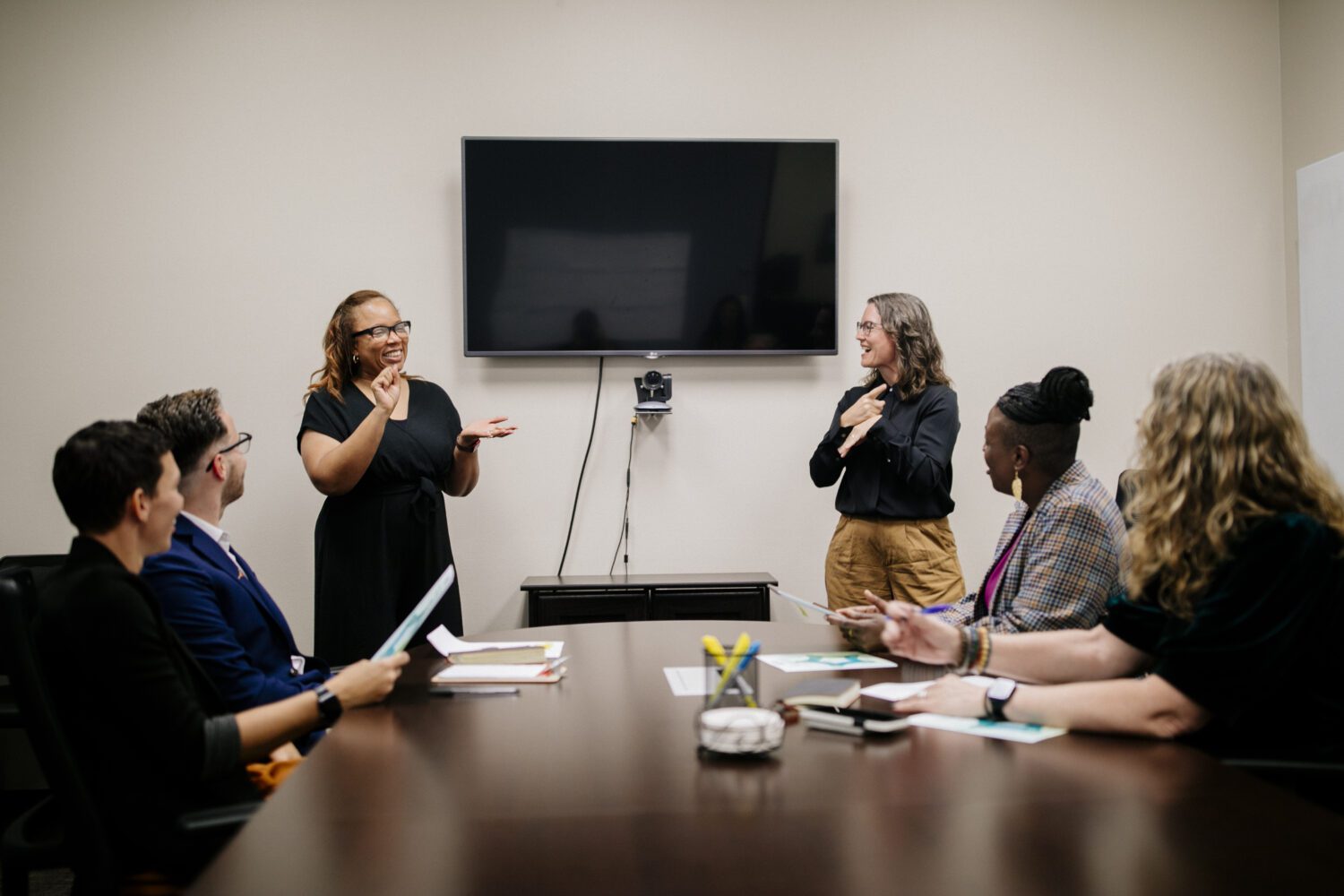As many educators discovered this spring, teaching students online is very different from teaching students in the classroom. Without thoughtful planning, deaf students may be left behind and lose critical access to their education. Such inclusion becomes even more vital when considering that these students already face many barriers to access.
“Instructors have a vital role in supporting and ensuring the success of deaf students. As they adapt their courses for online delivery, it is an ideal time to incorporate accessibility into their instructional design, to create vibrant learning environments that will help their students thrive,” said Stephanie W. Cawthon, PhD, director of the National Deaf Center on Postsecondary Outcomes (NDC), professor at The University of Texas at Austin College of Education, and an international expert on accessibility in education.
Tips for Instructors: Teaching Deaf Students Online, a new resource from NDC, helps teachers and professors ensure their course remains fully accessible and that deaf students are included in decisions about accommodations, access, and more.
The resource guide takes educators through the basic steps for ensuring deaf students have equitable access to all course materials, and provides links to more information about key areas of accessibility – including captions, interpreters, test accessibility and more. It will help educators in a variety of settings, whether they teach at a four-year university, community college, trade school, high school or offer online instruction for students who are home schooled or in other non-traditional settings.
Here are some of the most important tips included in the resource. For more advice, check out NDC’s 10 Tips for Educators and Checklist for Teaching Deaf Students Online.
Keep an Open Dialogue
When planning an online course, there are two things every instructor must remember – deaf people are not all the same and ACCESS is more than accommodations.
This means that the deaf student must be included in every step of the process. Ask the student how they prefer to communicate and what accommodations work best for them. Add an accessibility statement to your syllabus to communicate with all students in your class, not only those who have disclosed a disability. Be prepared to offer different accommodations for material that is presented live – such as lectures and discussions – and material that students access on their own time.
Then, schedule regular check-ins to ensure that the original accommodations are still working, and adjust as needed. Keep in mind that students who rely on captions may experience burnout with all of the extra reading required. Ask the student if they need alternative assignments or additional time to complete certain tasks.
Team Up with Service Providers
Remember to include service providers, such as interpreters or companies that provide live captions, in the conversation and as essential members of your teaching team. When possible, do a test-run before classes begin to identify and address pain points.
Ask the providers whether they are having trouble accessing the course material or learning management system, and troubleshoot any issues. For the best results, service providers need access to course materials ahead of time, and an explanation for any jargon or topic-specific terminology or concepts.
Make Materials Accessible
Effective teaching means equitable access to all of your instructional materials and media. Research shows video captions benefit everyone, including fluent English users, students with ADD/ADHD or learning disabilities, English as Second Language users, and more. Plus the courts recently ruled that captions provide equal access to students as required by law.
To add captions, follow industry standards, check out DIY captioning resources, or contact a captioning vendor. For videos you produce yourself, be wary of apps or programs that provide auto-generated captions, which are not considered equitable access due to their high error rate. Save yourself time and make sure videos you source or develop for class content are properly captioned.
Other key access features explained in the resource include descriptions or alternative text (alt text) of visual content, using plain language, and visual indicators, which have been shown to improve student scores in online courses.
Set Ground Rules
Real-time lectures and discussions can be difficult for a deaf student to follow without set procedures in place. Remind students to raise their hand – literally, or using video conferencing features – and wait their turn. Pause between participants to allow captioners or interpreters to catch up before moving to the next point.
When possible, ask students who are not speaking to pause their video. This makes it easier for the deaf student to identify and follow the speaker.
Stay Flexible
Access is not a one-size-fits-all formula. If possible, consider a mix of synchronous and asynchronous discussions and assignments, which can offer self-paced options for students. Use a range of diverse media in your course content to improve student engagement.
Remember: There are going to be bumps in the road. Be ready to change your plans when they arise. But if you check in often with your deaf students, work closely with them, and stay flexible in communication and course design, they will succeed in your course.









